|
A meeting of young astronomers was held on the Zlin
observatory from May 5th to May 8th, 2006. The
meeting was focused to CCD imaging and image processing this time.
One group controls the telescope and the camera (left),
other group learns how to process digital images (right) The rare event—passing of comet 73/P
Schwassmann-Wachmann very close to the M 57 Ring nebula—was
predicted to the early morning of May 8th. Meeting
attenders were excited by the possibility to observe such event, but
the weather was rather poor. The sky was partially cloudy all the
night and the transparent clouds changed the first quarter Moon into
the big orange letter D on the sky. The haze, shining Moon and the
intensive light pollution on the Zlin city limited the maximum visual
magnitude to about 3.5.
Still, we captured the 73/P and the M 57 on the one field at dawn.
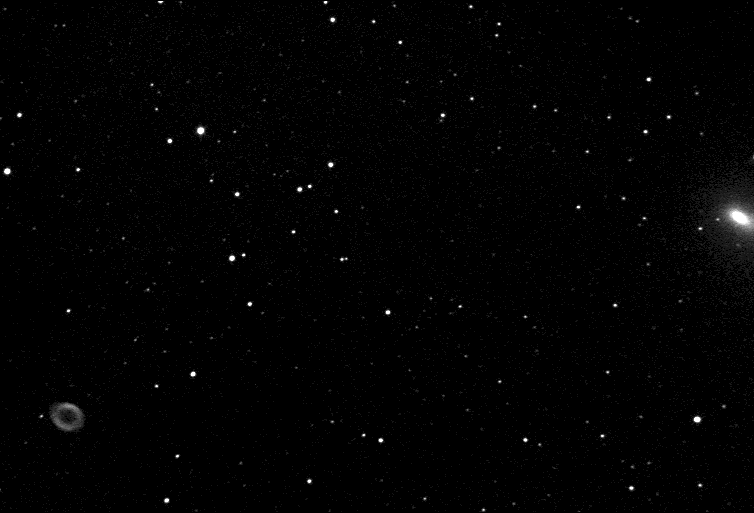
73/P and M 57 on May
8th. Animation created from 57 frames, each exposed for
30s. Sky conditions were more suitable for taking flat fields than for
capturing a comet approaching the nebula. The varying brightness of
the comet is caused by passing clouds. The first image was taken at
01:24 UT and the 57th (the last one of this animation)
at 01:55 UT.
We can only estimate how the event would appear if it happens a few
hours earlier. We created the following photo-montage to illustrate
it.
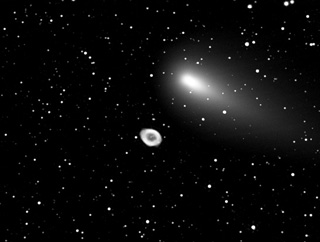
73/P and M57—a combination of two
independently acquired images. We were more successful in imaging the comet while waiting to the
final approach to M 57. The following
picture is a composite of 142 individual frames, each exposed for
30 s without filter.
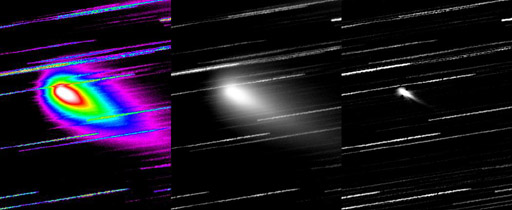
73/P in false colors (left) and in B&W palette
(center). The median filter was applied to the right
image. Note the jets escaping from the comet core on the above-right
image. The image was processed by subtracting the aperture median to
eliminate large-scale structures and to enhance small-scale
details.
Every 10th frame was used to create the image below. The
field of view is approximately 20' × 30'
(the angular size of the full Moon). The comet passed from right to
left within 70 minutes. Varying
brightness of the comet is caused by the varying sky conditions among
individual exposures.
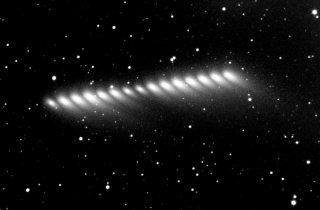
Fifteen 30 s exposures of
the 73/P, taken in 5 minutes interval,
combined into one frame. The animation below shows all 142 frames in one sequence. The first
frame was exposed at 00:05 UT and the last one at 01:22 UT.
Each frame was exposed for 30 seconds. The comet shifted approx.
2.5 pixels during one exposition. Notice the
satellite trail, visible on one frame as straight line crossing the
field of view.
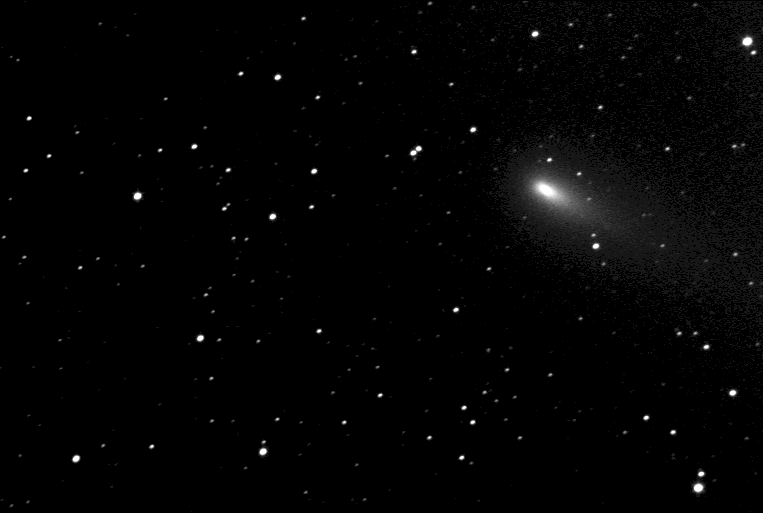
73/P animation compressing the 77 minutes long comet trip
into one image. The same frames, only differently processed. The comet stands still
and the stars are passing behind.
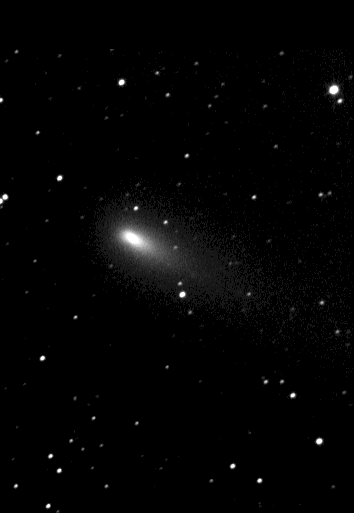
The same data differently processed create different
animation. All images on this page captured by Pavel Cagas, Vaclav Pribik and
Petr Cagas.
Images captured by G2-0400 CCD camera on 8" f/4 Newtonian telescope
and processed in the SIMS software package.
| 